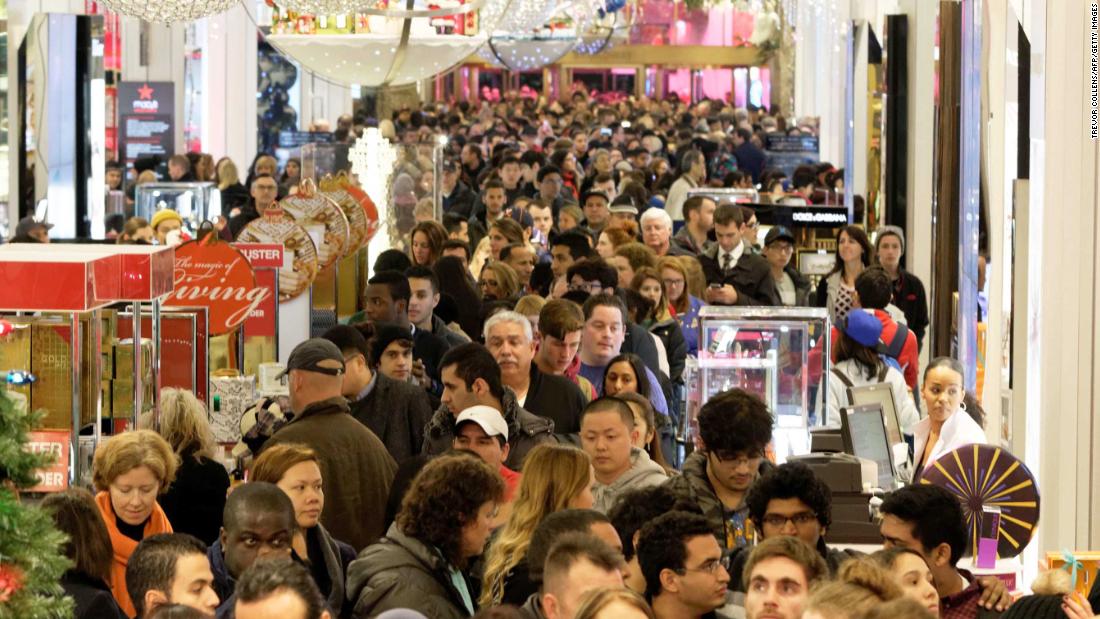
The informal kickoff to the Christmas shopping season has morphed into a spectacle that helps retailers lure shoppers to their stores.
Millions of Americans participate in the bonanza. More than 70% of people who plan to shop during the holiday season will turn out for Black Friday sales this year, according to a survey from Deloitte.
It's one of the most important shopping days in the United States, but, despite a common perception, the name has nothing to do with red or black ink on a merchant's balance sheet.
Black Friday started in the 1950s in Philadelphia.
Hordes of shoppers from the suburbs descended on the city for the days after Thanksgiving, according to Bonnie Taylor-Blake, a neuroscience researcher at the University of North Carolina. The city promoted big sales and decorations, ahead of the Army/Navy football game, which took place on Saturday.
"It was a double whammy," Taylor-Blake previously told CNN. "Traffic cops were required to work 12-hour shifts, no one could take off and people would flood the sidewalks, parking lots and streets. The cops had to deal with it all and coined the term."
City merchants also started to use the term to describe the long lines and shopping mayhem at their stores. "It became this comical reference to downtown Philadelphia following Thanksgiving."
In 1961, the idea of re-branding the holiday to "Big Friday" was floated so that one of the biggest days in shopping wouldn't carry a negative connotation. But that didn't catch on.
Over time, retailers learned to embrace the name and even expanded the one-day shopping event.
Around 2003, retailers upped the stakes by adjusting store opening times. That year, Kmart, Walmart and Sears offered pre-dawn sales beginning at 5 a.m. or 6 a.m. That was the same year Black Friday became the most profitable shopping day of the year, according to data from the International Council of Shopping Centers. Before 2003, the most profitable shopping days in America came late in December.
In 2011, Walmart extended the holiday again when it opened it stores at 10 p.m. on the night of Thanksgiving and stayed open through Black Friday.
With the rise of the internet, another shopping holiday was born in 2005: Cyber Monday. It was a marketing term coined by the National Retail Federation for online retailers to mirror the shopping craze felt by brick-and-mortar stores on Black Friday.
Cyber Monday has exploded in popularity since then. Last year, Adobe said it racked up $6.59 billion in sales -- making it the largest ever online shopping day in the United States.
Shoppers said that sales and discounts are the biggest factor in choosing what store they pick, followed by free shipping and convenient location.
Bagikan Berita Ini















0 Response to "The history of Black Friday"
Post a Comment